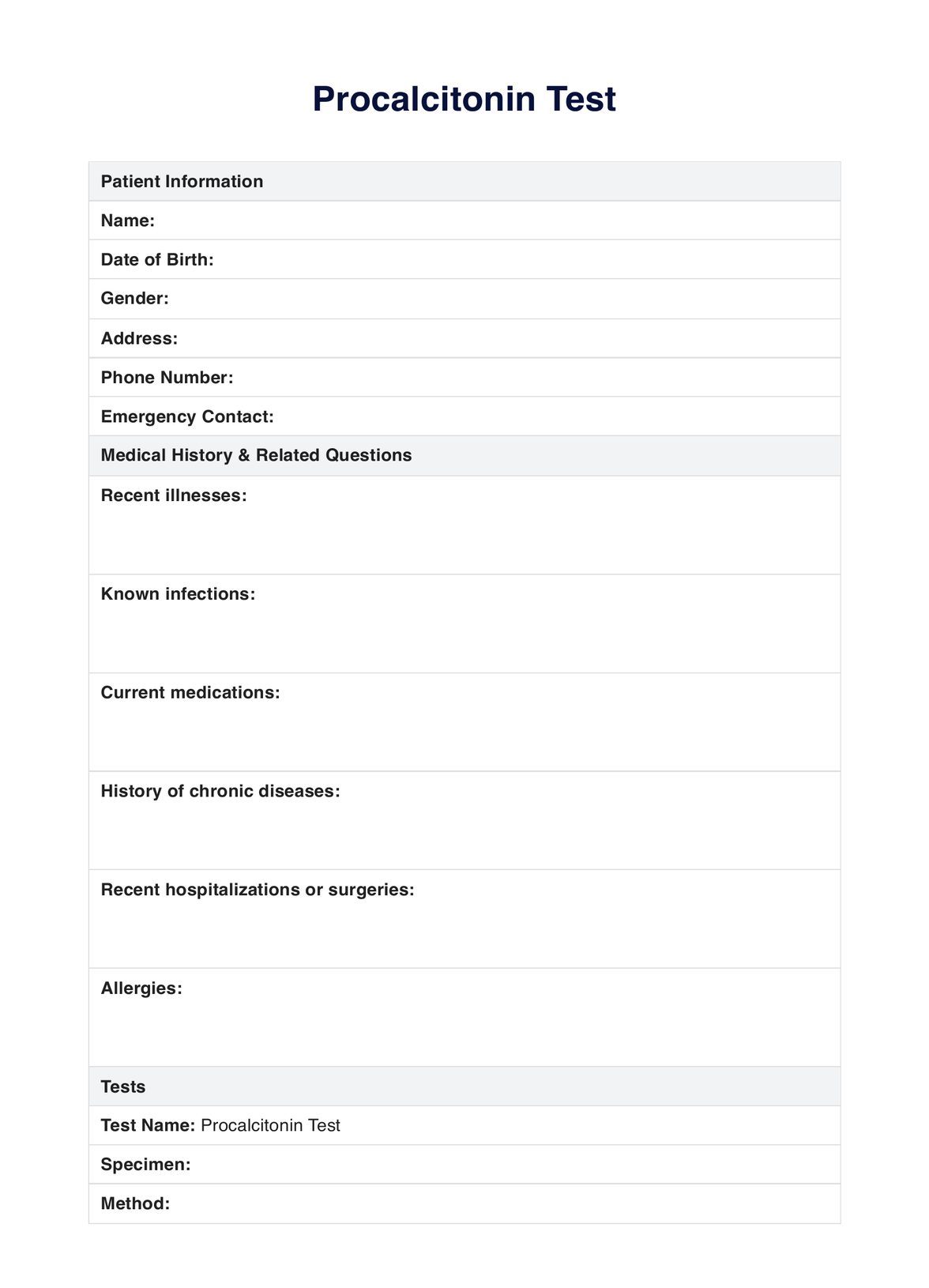Carepatron employs top-tier, HIPAA-compliant security measures to safeguard patient data, ensuring confidentiality and peace of mind for healthcare providers.

Procalcitonin
Unlock efficiency with Carepatron's Procalcitonin App! Seamless integration, real-time updates, and superior data security in healthcare. Join us for excellence!
Use Template
Procalcitonin Template
Commonly asked questions
Carepatron is designed for interoperability, allowing seamless integration with various electronic health systems to enhance workflow efficiency.
Yes, Carepatron is scalable, catering to the needs of diverse healthcare settings, from private practices to large-scale healthcare facilities, ensuring optimal functionality regardless of size.
EHR and practice management software
Get started for free
*No credit card required
Free
$0/usd
Unlimited clients
Telehealth
1GB of storage
Client portal text
Automated billing and online payments











